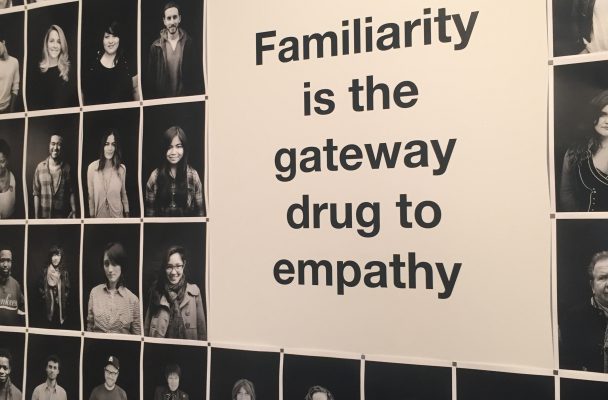SECCA’s ‘Dispatches’ plants the seeds of our legacies

iO Tillet Wright’s “Self Evident Truths.” Photo By: Liz Reichart
By Liz Reichart//A&E Editor
“Ars longa, vita brevis”- that Latin refrain muttered by art students pulling all-nighters, by Michelangelo as he painted the ceiling of the Sistine Chapel on his back. Life is short, but art lives eternal. Art in all its forms tells our stories, long after we are gone. Prodigious artists create when crushed by the burden of carrying on these legacies. The very best of visual narrative is planting seeds in a garden we are never witnesses to. No demonstration shapes today’s stories, both untold and incessantly echoed, better than the Southeastern Center for Contemporary Arts’ “Dispatches” exhibit located in Winston-Salem.
A dispatch is a journalism term used to describe what’s happening on-the-scene and in real time during conflicts including times of war, making it an apt title for a collection that is so contemporaneous. Divided into five distinct themes, the subject matter of “Dispatches” overlaps and augments to the viewer’s understanding of current events, the most current of events, the very heartbeat of the globe as we know or do not know it. It does so through a range of multimedia as numerous as the eyes we can peer through, as plentiful as the myriad of stories that are told.
Heart-wrenching is the exhibit’s timely discussion of the Syrian refugee crisis. Emotive, gritty photos of refugees escaping and living in squalor surround a giant black raft which hangs from the ceiling, one which was used by desperate fleers to reach the shores of Greece. Gallery visitors navigate an abandoned pair of floaties, a stranded pair of baby shoes, family photos and other various neglected items pasted to the floor. These articles were forgotten by refugees on the shores of Greece as they fled, and now sit in silent condemnation next to your clean shoes that you wore to an art gallery under opposite circumstances.
Perhaps the current event with the most contentious discourse surrounding it is that of the recent presidential election. “Dispatches” does not shy away, devoting a section to the depiction of said discourse, not just among the candidates, but among those who selected them. Evoking emotions across the spectrum, Sheryl Oring’s “I Wish to Say” project depicts a group of 20 volunteer typists sitting in central park, as passerby’s dictate postcards to the presidential candidates. The postcards are clipped to a clothesline and paired with polaroids of those messengers, old and young, wise and pithy, but all desperate to be heard. Viewing this pre-election coverage post-election is tear-jerking, laugh-out-loud funny, and deeply thought-provoking.
What the pieces in “Dispatches” have in common is a contemplation of what it means to be human, and reexamining the humanity in our current events. No where is this more evident than in iO Tillett Wright’s arrangement of 110 photographic prints, titled “Self Evident Truths.” Wright’s Self Evident Truths project is a photographic document of 10,000 people in the United States that identify somewhere on the LGBTQ+ spectrum. The photographer’s goal through this project is to bring awareness and understanding to a broader spectrum of human sexuality. By erasing the lines between labels of sexuality (his piece reads in bolded text “Familiarity is the gateway drug to empathy”), Wright attempts to dissolve boundaries and celebrate complex identities.
Cora Fisher, the creator of “Dispatches,” said that her vision for the exhibit originated from the exploration of how journalism has changed.
“Much of modern day reporting is quick response and in the moment,” Fisher said. “Telling live news stories through art makes us slow down and reflect of the frenetic pace around us.”
The title of “Dispatches” as a verb applied to an object (dispatching “something” or “someone”) detonates a violent end; this connotation too reflects that speed and violence in Fisher’ perceptions of the changing space of journalism.
“My hope for the exhibit is that attendees will leave with the idea that the time and reflection we give to art can carry over into digesting the news – to look past the headlines and into the stories,” Fisher said.
Art, with its insincere reputation of being esoteric, has never been more personal than in this exhibit. Fraught with the horrors and delights of what makes us human, “Dispatches” is most certainly worth the visit to SECCA; the art on the walls is not some painter from a distant time. It is you in these photos; it is us in these films. Contemplative and contemporary, “Dispatches” tells your story.
For more information on SECCA and “Dispatches,” visit SECCA.org